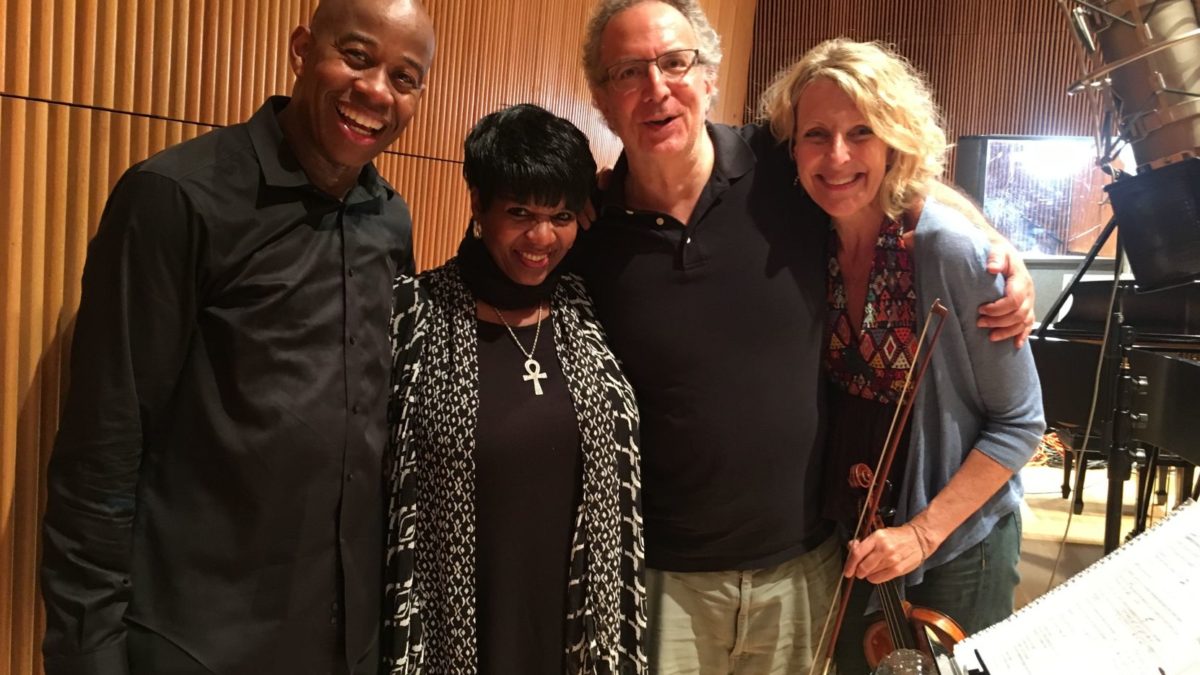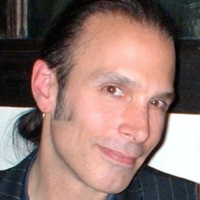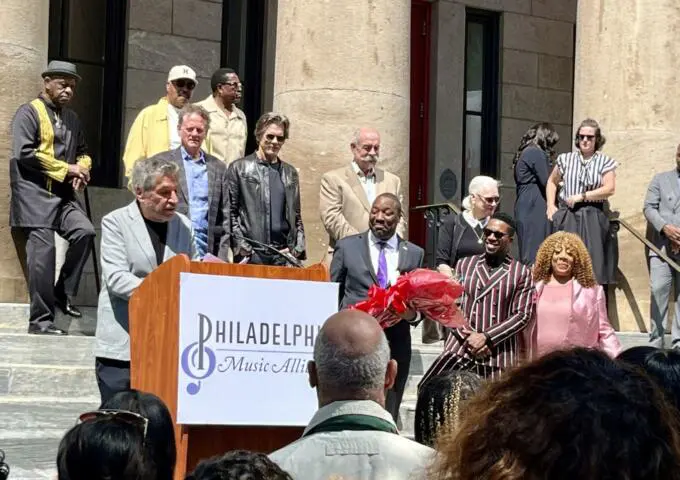If you live, work, dine or drink in Center City, you’ve seen Octavius Catto’s 12-foot bronze statue at City Hall’s southern corner.
The memorial known as “A Quest for Parity” is homage to Philadelphia’s most noted civil rights activist, educator, abolitionist and baseball hero. The first city-sanctioned public monument to an African-American in Philly is a bold dedication to one man’s dramatically diverse and smartly incendiary brand of advocacy.
Even if you don’t know a single thing about Catto, the intensity of sculptor Branly Cadet’s design is palpable.
“A Quest for Parity” is also a reminder of history’s fucked up racism, then and now and in Philly and beyond, as Catto (a Republican) was killed on Election Day 1871 at 9th and South by an ethnic Irishman (Democrat) during a day of turbulence where white rioters ran roughshod through the city’s black neighborhoods in an attempt to silence the African-American vote.
And yes, the murderer was acquitted.
“Catto gave a commencement speech in Philadelphia for the Institute of Colored Youth students in 1864. In that talk, he urged graduating students to help newly freed slaves to read, write and acclimate to life as free people,” said one-time Philadelphia Inquirer reporter Murray Dubin, the co-author alongside fellow journalist Daniel R. Biddle of “Tasting Freedom: Octavius Catto and the Battle for Equality in Civil War America.”
Along with the Dubin-Biddle book and the erection of the Catto statue arrives new work dedicated to preserving the memory of the African-American activist while uplifting his messages of real equality into the present day dialogue: Philadelphia-born composer and pianist Uri Caine’s “The Passion of Octavius Catto.”
Based on the 2014 concert commissioned by the Mann Center in collaboration with the Philadelphia Orchestra, Caine’s elegant mix of jazz, classical, chamber music, R&B and gospel is an epic along the lines of John Dos Passos’ “USA” — a reflection of America’s then and now — torridly told with the aid of old Philly friends in vocalist Barbara Walker, a rhythm section of Mike Boone and Clarence Penn and new collaborators in conductor Andre Raphael, the Nadra Neal Singers and the Philadelphia Choir Ensemble.
“There’s a reason it’s called ‘passion,’” Walker said. “That’s what Catto was about when it came to true freedom and emancipation, and that’s what we are singing and playing about him.”
Uri Caine, a master of Modern Creative sound and its wild mix of classical, jazz and Tin Pan Alley stylizations — both avant-garde and traditional — applies his usual blend(s) to his compositional passages of “The Passion.” Whether the listener goes full tilt into its decadent, dissonant strings and airy choral vocals or focuses on Caine’s coolly intense piano lines with hearty singer Barbara Walker in the foreground, it’s not hard to hear that this project feels different than what we’re used to hearing from the Philadelphia-to-NYC transplant, even though much of its tones are similar to that of his most epic works.
Caine started the Catto dialogue in 2014, when he had just released separate albums with trumpeter Dave Douglas and singer Cristina Zavaloni.
“I had come through a period of doing other composers’ classical music and releasing my own original albums and writing my own music for those, so the Catto project came at an interesting time,” Caine said.
The Mann, at the time, was looking to a do a community-based event with gospel singer Marvin Sapp, area musicians and the Philadelphia Orchestra with a message of unity serving as the undercurrent. As Caine discussed the project, a Mann executive played a Mahler recording the pianist had done with Barbara Walker and a choir. “That’s it… You have to write a piece now,” Caine recalled the exec saying.
Only what was he to write? About what? And what sound? And who would be involved?
A connection was made, in Caine & co.’s mind, as the City Hall statue of Catto was being unveiled, and the activist was to be honored. The pianist recalled gigs he had played in his youth for Shriners and American Legion guys, and there was even a Catto group, Caine noted, referring to Catto’s Elks Lodge.
“I asked who he was and [was] told that Catto was part of Philadelphia history, and someone I should know — someone inspirational who was assassinated, and whose memory should be kept alive,” he said.
Caine considered the history of the Philadelphia he knew, musicians such as drummer Philly Joe Jones who was one of this city’s first trolley drivers. As he did with most of his albums’ topics, he got into the story at hand, and read everything he could get his hands on. For the most part, this meant the one and only in depth book dedicated to all things true and Catto: Murray Dubin and Daniel R. Biddle’s “Tasting Freedom.”
When these two authors wrote“Tasting Freedom,” there were no books on Catto, scholarly or general overview.
So why him? And why them?
Octavius Catto, the muse
In 1996, while working at the Inquirer, Dubin wrote a book on the history of South Philadelphia called “South Philadelphia: Mummers, Memories and the Melrose Diner.”
“One of the institutions where I did research was at the Library Company at 13th and Locust,” Dubin said. “I was there regularly for weeks and the librarians knew what I was doing. One day in 1994 or 1995, Phil Lapsansky, a librarian with expertise in local black history, gave me an academic essay written in the 1970s about Octavius Catto. Like most academic essays, it was not written very well, but it was nonetheless fascinating and Catto’s speeches were extraordinary. I was surprised that I had never heard of him and disappointed that no teacher had ever mentioned his name. I added four or five paragraphs to my South Philadelphia book about Catto, but I knew he was worth more. A magazine piece, a book, something.”
By 2001 or 2002, when the two full-time Inquirer writers decided to work together, in addition to the academic essay, they now had Google on their side.
“Our research efforts were stolen moments at night or on weekends,” claimed Dubin. “We knew that Catto was a teacher at what was the best school for African-American children in the city. We knew he was a civil rights leader. We knew he was a recruiter of black soldiers in the Civil War and we knew he was a baseball player on a black baseball team. It’s difficult to remember when in time you learned something, but by 2003 we wanted to make sure that we could work together easily. We pitched a Catto story to the paper’s Sunday Magazine and had it published that summer. The reaction to the piece was generally positive, but we received several hateful phone calls criticizing us for putting a black historical face on the cover of the magazine. We also received a delightful phone call from an out-of-town woman who was the great-granddaughter of a woman close to Catto that we wrote about. Both emotional reactions spurred us forward.”
The newspapers of the time were a major source of information for the authors. While the white-owned newspapers did not cover the day-to-day activities of black life, black newspapers did.
“And because Philadelphia had the largest free black population in the nation, not only did the Philadelphia black newspaper pay attention, but so did black papers elsewhere,” Dubin said. “There were also white civil rights newspapers that paid attention to the city because of its abolitionist organizations. The Frederick Douglass newspaper in Rochester, New York often had stories about black Philadelphians and about Catto and his father, the Rev. William Catto.”
The pair researched black fraternal, social and religious organizations and institutions in the 1800s, and had help from the historians at the African Episcopal Church of St. Thomas (Catto’s church). Often, the two authors met dedicated men from the Catto Elks Lodge at Catto-based events.
“There was so much we didn’t know… so I started trying to get smarter both about his life and about the lives of black men and women in both Philadelphia and the North,” Dubin continued. “I knew something about the history of slavery, but knew very little about the lives of free black men and women in the 1800s. That’s where we started.”
And what began as a biographical look at a forgotten hero of emancipation turned into a tale of a call heeded by many black men and women fighting for equal rights in the North in the 19th century: a civil rights movement long before that of the 1950s and 1960s.
Ask Dubin if “Tasting Freedom” is at least partially responsible for the Catto statue and Caine’s long-form classical-jazz work, and he’s pragmatic.
“Let’s be clear — Jim Kenney, then a City Council member, did not learn about Catto because he read ‘Tasting Freedom,’” Caine said. “He did that on his own. But the book certainly gave his effort to put up a statue some gravitas and name recognition for Catto.”
Racism, as a constant
Octavius Catto was born free to his mother Sarah Isabella Cain, who was a member of Charlestown’s prominent mixed-race DeReef family. His father, William T. Catto, gained his freedom and was ordained a Presbyterian minister after working as a machinist and being enslaved.
The brood moved to Philadelphia, where his dad wrote “A Semi-Centenary Discourse,” a history of the First African Presbyterian Church in the city. Octavius went to segregated learning institutions such as Lombard Grammar School, before entering New Jersey’s all-white Allentown Academy in Allentown River in 1853. By 1854, when his family returned to Philadelphia, young Catto enrolled at the Quakers’ Institute for Colored Youth.
Upon his graduation in 1864, however, Catto’s commencement address touched on the insensitivity of white teachers toward the needs of African-American students. The seed had been planted, and from there, Catto crafted eloquent, wise speeches dedicated to equality, civil rights and desegregation, while holding posts such as that of Corresponding Secretary of the Pennsylvania Equal Rights League and Vice President of the State Convention of Colored People.
In 1865, with a reputation for elegantly incendiary writing and oratory, Catto delivered the opening address at the celebration of the second anniversary of the Emancipation Proclamation. Catto also picked up on the cause of desegregating Philly’s horse-drawn streetcars, especially where women were concerned. Not only did he aid in the passage of a bill that prohibited segregation on transit systems in Pennsylvania, he was also a part of the state’s vote to ratify the 15th Amendment, which prohibited discrimination against citizens in registration and voting based on race.
“Coming to terms with the long history of racism and the accounts of Catto’s deeds and words made me want to use his texts as the basis of our story,” Caine said. “I began calling the two authors, Dan and Murray, to get their insights into their book, as well as seeking out any and all documents, films, whatever I could get my hands on.”
One-time Philadelphia Orchestra assistant conductor Andre Raphael became part of the project, and was integral after the Mann concert’s event in pushing Caine and Co. to record the music they made, first with the Philadelphia Orchestra.
“There was enthusiasm about Caine’s piece that we talked for a few years about trying to record it,” said Raphael, currently a conductor laureate of the Wheeling Symphony Orchestra. “What was neat about the project was that it started from the ground up, with Uri and I having conversations about why the album would be important and how we could make it work “
Caine claimed that it was frustrating at first. “But, after Trump was elected, we really thought it was crucial to the temperature of the times.”
A Kickstarter was enacted for funding, the cost was met and the album was set to be recorded. “Funding it through Kickstarter made it an independent project and gave it a personal focus,” Raphael noted.
Caine divided Catto’s biography into 10 musical chapters with different moods and movements guided by the spirit of righteous indignation and furor. It’s not new territory for Caine, shifting from dissonant classical to calm jazz trio passages.
“The text lends itself to various styles, and one could then think of it as a modern day representation of what the feeling must have been like when some events happened during Catto’s lifetime,” Rapahel said. “Through those words, I imagined it as something dramatic, sung by a choir. As I was reading his views on equality, the words of the Constitution also came into view. I liked the contrast of the concerto-like and the dissonant, playing into the harder elements of the story, such as his murder.
While all of Caine’s work has the feel of an epiphany or a hallelujah chorus, “The Passion of Octavius Catto” has a rise to it that, even when its protagonist dies, feels sanctified and elevated. “It’s exactly what it should be, about a man who would not give up his struggle,” Caine said.
Barbara Walker — a powerhouse vocalist possessed of a rich dynamic baritone and nuanced subtle theatricality — is well versed in everything from Hammond B-3 organ jazz (thank her dad for that, as the West Philly pair played together) to simmering R&B (Aretha and Al Green were her first favorites). She’s toured with Patti LaBelle, Oscar Brown Jr. and Branford Marsalis, recorded with LL Cool J and Jamaaladeen Tacuma, made house music for the Brando/DeNiro movie “The Score” and worked the dramatic musical stage in tribute to Duke Ellington with “Essentially Ellington.”
“No matter what else I’m doing, Uri comes first,” Walker said of their collaboration.
She is, in a fashion, the most crucial piece of the “Passion” puzzle as Catto’s and Caine’s voice is her voice. Then again, Walker has been Caine’s muse since they met 23 years ago in a most auspicious fashion.
“We met in St. Barts, when my agent sent me down to the Caribbean to sing R&B, and Uri was my keyboardist, a lounge act for 45 minutes a night,” she said with a big laugh. “We fell in love with each other like brother and sister.”
Walker knew of Catto’s civil rights advances before the project but did further research into his life and achievements, studying his speeches repeatedly before she stepped into the recording studio.
“They gave me the necessary insight and inspiration to go deeper into the songs and Catto’s words,” Walker said.
She started singing the lyrics “We can rise, yes, we can rise,” and noted the momentum of songs such as “No East No West.”
“I’m feeling it now,” she said with a laugh. “Considering the election, watching the primaries’ politicians and their little pitches, a song such as ‘No East No West’ and its discussion of voters’ right for all makes sense. It’s current, in our faces today. We’re still working toward freedom and salvation. Plus, he was a martyr for his cause like Dr. Martin Luther King.”
The singer personalized Catto’s words by quietly mentioning “The Lament of Caroline Le Count,” the song about the late activist’s fiancée. Walker’s husband died over 20 years ago.
“That song touched my heart and allowed me to project my pain into the lyrics,” she said. “We did that song last, and when I went to get into the booth, I began to cry. They had to wait for me to be able to sing it without tearing up.”
Walker also noted the most unlikely aspect of Catto’s heroism — being a black ball player and team organizer at a time when sports were strictly a province of white America.
“Catto was a baseball star, co-founded the Philadelphia Pythians. I told Uri that when the Phillies play, we can set up a tribute to African-American ballplayers in Philly history and celebrate Octavius Catto’s memory by playing a song or two,” she said.
Ask Walker what she hopes audiences will feel from her new album with Uri Caine — whether they know the historical legend of Ocatvius Catto or simply stroll by his statue on a casual basis — and the singer is blunt. “That passion of Catto’s, how it’s going on now, and will continue to go on, that’s what people should know. If you don’t stand for something, you’re going to fall for anything.”
The Passion of Octavius Catto | Available through Spotify, iTunes and via UriCaine.com
TWITTER: @ADAMOROSI





